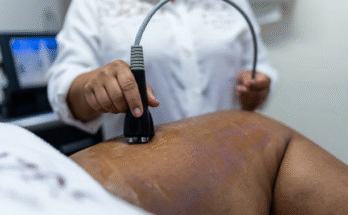Cold Bath Therapy: What if the key to improved health and relaxation has been hanging in plain sight for thousands of years? From the ancient Greeks to modern-day London, Ontario, cold bath therapy has been a recurring theme in the history of human health. It began as a technique to relax tense muscles and alleviate diseases. Over time, it evolved into so much more. It became a healing tool, a social practice, and even a scientific wonder.
Table of Contents
In ancient Greece, philosophers such as Hippocrates and Plato investigated the advantages of hot and cold water. The Romans made bathing a daily ritual, constructing great spas where people recover and connect. By the Renaissance, doctors were using cold baths to treat everything from fevers to mental problems.
Cold bath therapy in London, Ontario, is gaining popularity again, thanks to advances in science. Ice baths are used by athletes to speed up their recovery, and researchers are discovering new benefits such as inflammation reduction and neurological system stimulation. But how did this historic ritual make its way to London, Ontario? What makes it so powerful? Let’s journey back in time to learn the interesting history of cold water therapy and why it’s still important today.
Ancient Greece and Cold Bath Therapy in London, Ontario
Cold water bathing has long been studied for the potential health benefits it may give. Thermalism, which was renowned for its positive effects found by the ancient Greeks, (Cold Bath Therapy) used water at different temperatures in order to relieve muscle weariness and other health issues.
Complications such as skin illness were among the initial goals for cold and hot water therapy. People also targeted muscular and joint discomfort. They discovered its other benefits, such as relaxation and socialization, only later. This happened as water use grew more widespread.
Even Hippocrates and Plato, who were pioneers in modern philosophy and medicine at the time, were among the first to explore the effects of hot and cold water and recount their advantages for scientific research.
Ancient Rome
Later, in the Roman era, the use of water expanded even further, with regular bathing being an important part of personal hygiene. Soldiers returning from battle frequently sought rehabilitation in spas, for example, while people of the nation also participated for social and personal reasons.
Bathing became a popular pastime, and spa construction eventually began to grow. The rise of aqueducts increased the development of spas, allowing hundreds, if not thousands, of people to enjoy the benefits of this unique and temperate water.
Galen and Celso, Roman physicians, also examined thermal remedies for their therapeutic powers, resulting in Hydrology and the actual prescription of thermal therapies. Nevertheless, it wasn’t until the beginning of the Renaissance era that water resurfaced as a potential therapy for various human ailments.
Renaissance Era
Spas and hydrology grew increasingly popular as technology evolved and improved, and their medical applications began to grow. John Floyer and James Currie, two physicians from the mid-1700s, used cold water to cure both physical and mental illnesses.
Currie, for example, used cold water to treat fevers, and Floyer pushed for cold bath therapy in pediatrics as well. Floyer thought that newborns and children were best capable of bathing in cold water since the temperature was essential for human development.
During this time, physical exercise was frequently recommended in conjunction with cold baths, with mud packs, massages, and strategic use of nature (such as gardens encircling the bath) to increase the bath’s effects. Together, these developments helped establish several thermal therapies that people use today for similar purposes.
Cold Bath Therapy in London, Ontario, Today
Today, cold baths and warmer waters aren’t commonly utilized to treat human illness as described above. Their uses and applications are still quite similar, now supported by science. In London, Ontario, ice baths have become a popular recuperation tool for athletes. They are also popular among fitness freaks and even people trying to improve their general health.
For example, several local gyms and health centers in London now provide ice bath therapy in order to relieve muscle stiffness and accelerate recovery after intense exercise. According to research and personal experience, low temperatures help lessen muscle spasms, edema, and overall pain. Beyond the physical benefits, researchers are looking into how cold water therapy can promote mental health. They are also exploring its potential to help manage illnesses like chronic obstructive pulmonary disease (COPD). This includes methods such as vagus nerve stimulation.
In London, this centuries-old method has found a modern home. It combines tradition with modern science to benefit both the body and mind.
Full Circle of History: The Future of Ice Baths
Cold bath therapy in London, Ontario, has gone a long way from its origins in ancient Greece and Rome. What began as a technique to reduce muscle tiredness has grown into an effective tool for general health and fitness. As research progresses, fresh findings give light on how cold water therapy works. The potential benefits continue to be discovered, ranging from inflammation reduction to nervous system stimulation. Wellness facilities like Longevity Lounge in London promote this practice, allowing people to feel the restorative effect of cold water.
The narrative of cold bathing therapy is far from finished. As we learn more about its effects, one thing becomes clear: this ancient practice has a permanent place in modern life. It links us to the past while helping us in building a better future.
Visit Longevity Lounge for an amazing cold water therapy experience!




